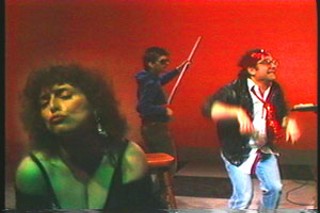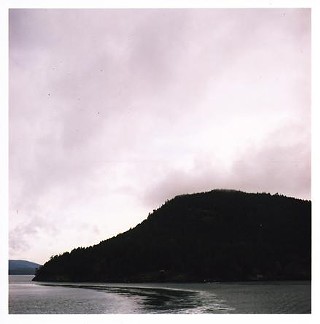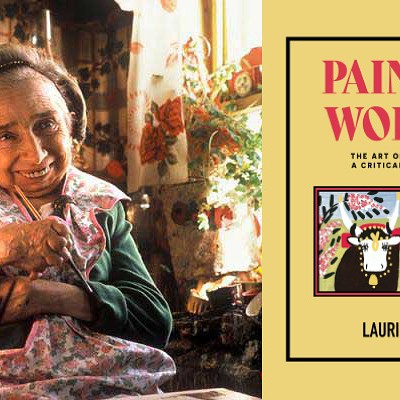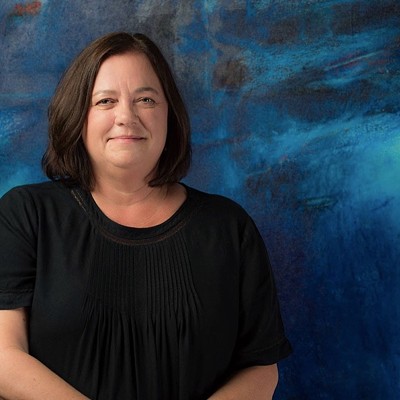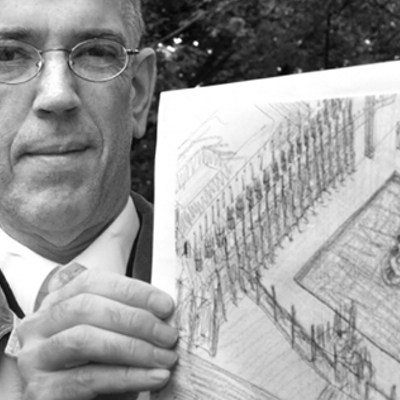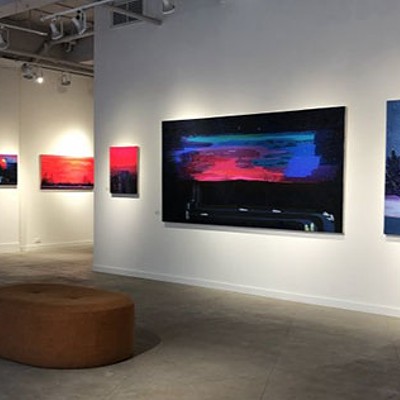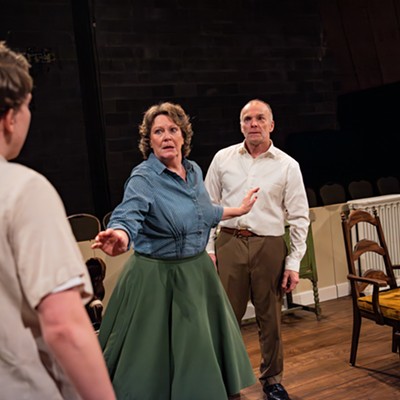Critics in the countrys major cities always seem to be theorizing why smaller centres like Halifax and Winnipeg have thriving arts communities, despite a dearth of population and money.
I dont know the answer, Winnipeg artist Daniel Barrow says. So, who cares what Toronto big shots are saying? Its this DIY ethos that characterizes Barrows Winnipeg Babysitter project, showing at North Street Church on February 15.
Winnipeg Babysitter collects footage from cable-access TV shows of the 80s and early 90s, when Canadian broadcasters--- in Winnipeg it was Videon---were legally required to provide resources for community programs. Anybody with a vision could rent a studio and produce a show in what Barrow calls the golden age of public access---an era ending in 1996 when the CRTC withdrew the requirement. When Shaw Cable purchased Videon in 2001, the entirety of its public-access archives was destroyed.
Back then, Winnipegs community programs were popular across all demographic groups. Barrow remembers The Pollock and Pollock Gossip Hour---one of his favourites as a teenager. It was produced by a brother and sister who looked for interview subjects from the vaguely famous to the flat-out bizarre, then interviewed them about their love lives and other gossip. When that invariably got boring, they threw on a Eurythmics album and danced around. They had a real knack for recruiting oddballs and there was nothing else like that in the 1980s, says Barrow. At the time, a poll found that co-host Natalie Pollock was more widely known by Winnipeggers than local star Burton Cummings.
Survival, a bizarre talk-show parody discussing post-apocalyptic living strategies, was made by a team of now-prominent film and TV professionals, including filmmaker Guy Maddin, producer Greg Klymkiw and South Park writer Kyle McCullough. Call-in request show Cosmopolitan was run by two elderly Dutch immigrants, who performed songs from Europe and the wartime era. It ran for 22 years and was incredibly popular.
Several years ago, Barrow wondered what had become of the programs hed spent his childhood and teenage years watching. Discovering the fate of the archives only furthered his desire to put together any possible surviving material. He spent three years collecting footage, mostly from producers who had archived their own work on VHS. Barrow was able to find most of the programs he wanted and strived to show a good cross-section of programming. It was basically curated from childhood memories, he says. His archives are not comprehensive: Many of the programs had a religious theme and I didnt use any of those.
Winnipeg Babysitter uses two projections: one a video montage of footage from the shows, the other a Pop-Up Video-type sequence giving basic information and Barrows commentary for each show. Its a departure from The Face of Everything, the story based on the biography of Liberaces boy lover, which the artist told by animating drawings on an overhead projector with accompanying narration. Barrow presented that work at a standing-room-only performance with Shary Boyle at the Khyber ICA two years ago. Barrow is still working on his hand-drawn animations and he sees his current work as a curatorial project that took on a life of its own.
In its hometown, the premiere of Winnipeg Babysitter had a line-up-around-the-block kind of response. Barrow sees those old shows as a critical piece of local history that shouldnt be forgotten---a view Halifaxs indie arts community can identify with.
The history behind Barrows Babysitter provides a cautionary tale for all communities where giant media conglomerates roam, where community interests can take a back seat to corporate ones. Not surprisingly, Winnipeg Babysitter has managed to captivate audiences well outside the city, across Canada and even in American cities where one might be hard-pressed to find anyone in the audience who could point out Winnipeg on a map. Its a really inspiring program and a unique and interesting history, Daniel Barrow says. People really relate to the story and the politics and the democratic ideals behind it.

